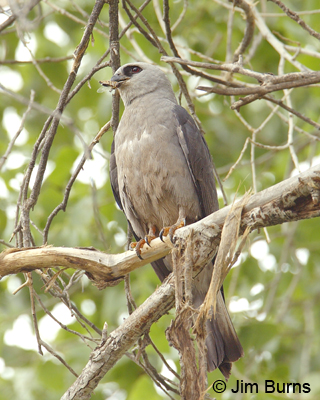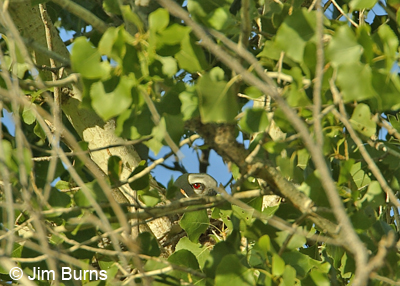
If you’ve ever watched dragonflies closely, or tried to net them as professional odonatists do, you know how erratic their flight path can be as they accelerate, hover, turn on a nickel and stop on a dime while capturing their own insect prey. Hummingbirds astound us with the things they can do on the wing, but hummingbirds only wish they had the aerobatics of the odonata tribe. Imagine the athletic skill set required to catch dragonflies on the wing. The Birds of North America uses four adjectives to describe the flight of Mississippi Kites: “elegant, acrobatic, powerful, and flexible.”
It is now known that Mississippi Kites are opportunistic predators that will take lizards, small rodents and birds, and even bats, but it is their aerial prowess and grace while taking flying insects that sets them apart from raptors in other families such as the buteos, falcons, and accipiters. They are colonial nesters, and groups of upwards to one-hundred have been observed hawking insects over lakes and shelterbelts in the stronghold of their territory, the southern Great Plains. Surveys suggest 35 to 50 pairs breed in Arizona’s disjunct population in any given summer.
At dusk one evening last summer I sat on a hillside above the San Pedro River crossing in Dudleyville watching five Mississippi Kites plying their trade all around me. “Aerial ballet” would be the perfect phrase to describe how they hunt on the wing, the smooth parabolas and gentle arcs nothing like the frenetic stop and go, twist and turn movements of their primary prey. And of course, they can “kite,” or hover in place, at will, which is why the childhood toy you flew on windy days took its name from this avian family, not vice versa. “Kite” comes to us from the Anglo-Saxon “cyta,” and the etymological root is “skut” which meant to go swiftly.
The best places in Arizona to see Mississippi Kites beside Dudleyville are the road along the north side of the Winkleman city golf course and the grounds of the Holy Trinity Monastery in St. David. The kites nest in cottonwoods and tamarisk, but good luck finding a nest because they are usually well hidden in the densest foliage of the home tree. I’ve never seen a Mississippi Kite on the ground, but they are known to bathe and eat carrion. Drive known areas slowly and watch the skies, and remember that dragonflies are solar powered, so mid-day to sundown is best, early morning not so much.
